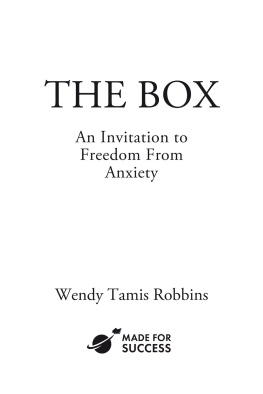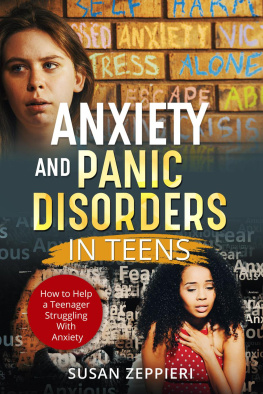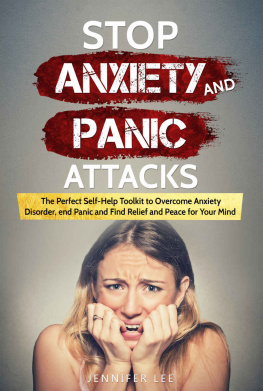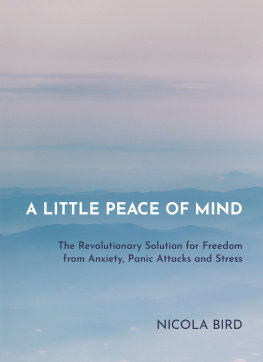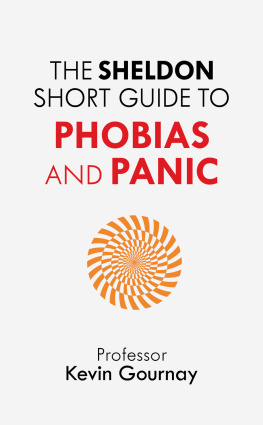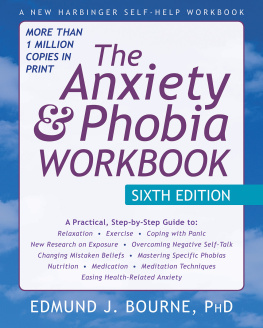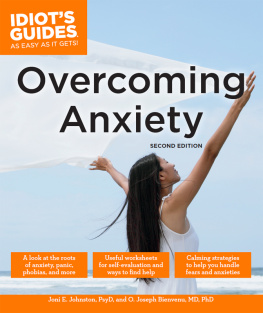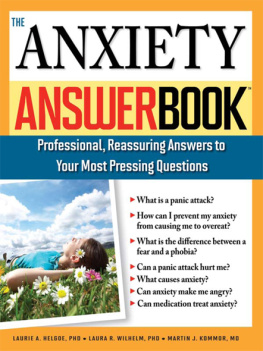Sommaire
Pagination de l'dition papier
Guide
Praise for
The Box
In a world that still stigmatizes mental illness, its beyond refreshing to see someone share their journey through decades of anxiety with such openness and honesty. And thats exactly what Wendy Tamis Robbins does in The Box. She bears it all, from her generalized and social anxiety and phobias to her eating disorder and suicidal thoughts and proves that regaining control of your life IS possible. And thats such an impactful and necessary message in todays world because too many people are living as prisoners of their anxiety. Her powerful and relatable memoir is proof to anyone suffering with debilitating anxiety that there is life beyond their mental illness. Robbins is so real about how her refusal to keep her anxieties hidden ultimately changed her life. And that makes The Box a must-read for anyone whos been silently struggling with mental illness out of fear that theres no hope for change. Because Wendy proves that change IS possible when you choose to take control of your disorder and live your life with resilience.
Lisa Sugarman, nationally syndicated columnist, radio show host, and author of How To Raise Perfectly Imperfect Kids And Be Ok With It, Untying Parent Anxiety, and LIFE: It Is What It Is
This book is a love letter to anyone whos ever struggled to understandand find hopewhile dealing with the loneliness and frustration of anxiety.
Brenda Ockun,StepMom Magazine, Founder/Publisher
The Box is a daring investigation that gives voice and visibility to the experiences and choices we box and bottle up. Robbins reminds us of the power to share and heal though honest reflection and storytelling.
Courtney Joly-Lowdermilk, M.S.Ed., Boston University
Wendys journey to overcome debilitating mental illness reminds us how serious mental health is, and that you are not alone if you are struggling. Read this book and set yourself free to your best life!
Janelle Bruland, author of The Success Lie: 5 Simple Truths to Overcome Overwhelm and Achieve Peace of Mind
Made for Success Publishing
P.O. Box 1775 Issaquah, WA 98027
www.MadeForSuccessPublishing.com
Copyright 2021 Wendy Tamis Robbins
All rights reserved.
In accordance with the U.S. Copyright Act of 1976, the scanning, uploading, and electronic sharing of any part of this book without the permission of the publisher constitutes unlawful piracy and theft of the authors intellectual property. If you would like to use material from the book (other than for review purposes), prior written permission must be obtained by contacting the publisher at Thank you for your support of the authors rights.
Distributed by Made for Success Publishing
Library of Congress Cataloging-in-Publication data
Tamis Robbins, Wendy
THE BOX: An Invitation to Freedom from Anxiety
p. cm.
LCCN: 2021934739
ISBN: 978-1-64146-622-6 (Paperback)
ISBN: 978-1-64146-634-9 ( Audiobook)
ISBN: 978-1-64146-633-2 (eBook)
For further information contact Made for Success Publishing
+14255266480 or email
This digital document has been produced by Nord Compo.
Note from the Author
I am no longer the 6-year-old hiding in a cardboard box, or the 30-year-old paralyzed with anxiety, or the 35-year-old asking for a divorce. They are important parts of my journey but belong in the past. I am now the observer and the witness giving them a voice.
This book is quasi-autobiographical. The stories I tell are what I believe happened at some point in my life to some version of my former self. However, those who experienced these events alongside me, as protagonists, friends, saviors, or mere witnesses, likely have different versions of how these events played out because they experienced and internalized them in their own unique way. What I saw, heard, and felt is what I witnessed and my truth. Parts of my story may have only existed in my mind, while other parts may be what I want to believe or wish had happened. These chapters do not attempt to paint an accurate depiction of historical events, but rather to reflect what I have carried with me and been defined by until now.
Preface
MY ANXIETY STARTED as a young child and ebbed and flowed for over 40 years. What I didnt know then was that anxiety disorders affect 25 percent of children between the ages of 13 and 18 years old. They also often co-occur with other disorders such as depression, obsessive-compulsive disorder (OCD), and eating disorders.
Collecting more disorders as my anxiety progressed was certainly my experience. I had a little bit of everything, and, at times, a lot of one thing or another. I had social anxiety, generalized anxiety, health anxiety, panic disorder, intrusive thoughts, harm OCD, depression caused by chronic anxiety, depersonalization and derealization disorder, and eating disorders woven throughout. I went untreated until adulthood, and even then, I was under-diagnosed, and treatment was not very effective.
All of these mental health issues created a desperate sense of isolation. I wish I had known then what I know for sure now: I am not alone. According to the Anxiety and Depression Association of America (ADAA), anxiety-related disorders are the most common mental illness in the United States, affecting more than 40 million adults age 18 and older every year. That is over 18 percent of the population. These disorders develop from a complex set of risk factors, including genetics, brain chemistry, personality, and life events. Nearly one-half of those diagnosed with depression are also diagnosed with an anxiety disorder.
Even those who dont suffer from a disorder have experienced anxiety in one form or another. It is a normal human reaction to a stressful situation. Actually, it is considered a beneficial response in certain dangerous situations that trigger our Our lives provide countless opportunities to experience normal anxiety: exams, relationships, illness, jobs, pandemics, elections, and civil unrest are just the tip of the iceberg. This normal anxiety is generally fleeting.
When anxiety becomes more constant and intense, it becomes a problem. The definition of generalized anxiety disorder is: The presence of excessive anxiety and worry about a variety of topics, events, or activities. Worry occurs more often than not for at least six months and is clearly excessive, according to the Diagnostic and Statistical Manual of Mental Disorders, Fifth Edition published by the
Panic disorder affects 6 million adults, or 2.7 percent of the U.S. population. Again, women are twice as likely to be affected as men.
Social anxiety disorder, or SAD, affects 15 million adults, or 6.8 percent of the U.S. population. SAD is equally common among men and women and typically begins around age 13.
OCD affects 2.2 million adults, or 1 percent of the U.S. population. OCD is equally common among men and women. The average age of onset is 19, with 25 percent of cases occurring by age 14. One-third of affected adults first experienced symptoms in childhood.
A group that is particularly at risk is college students. Unfortunately, no one prepared me, mentally or emotionally, for the transition from the complete familiarity and comfort of my hometown, my family and friends, known expectations and dangers, to a completely foreign environment, full of strangers, unrealistic expectations, and unknown threats. This was in large part because neither my parents nor my teachers or advisors knew about these statistics or were aware of my underlying disorder. Nor were there adequate services at the time to diagnose and deal with such issues. Since that time, I have seen countless college students battle new and/or exacerbated mental health issues and struggle to get the help they need. Some experience them for the first time and dont know how to handle them. Others find that certain thoughts and feelings that were just surfacing in high school take hold and gain momentum. Meanwhile, others hear an old, familiar voice and feel a sense of dread that casts an unwelcome shadow over what should be an exciting new adventure.

